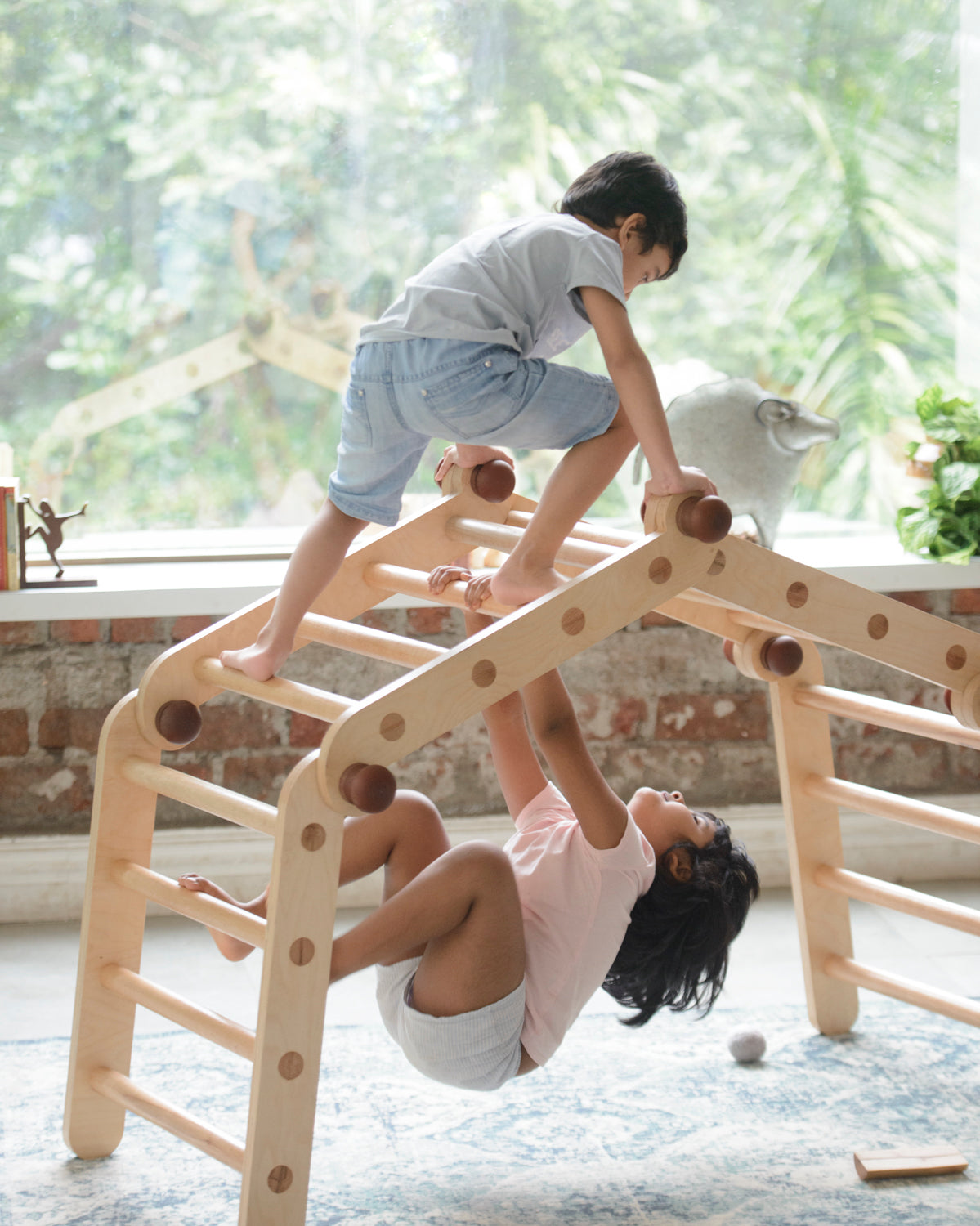
Few sights in the animal kingdom are as endearing as a proud mother surrounded by her little ones. She, whether a dog or cat from down the street, or a proud cheetah or elephant from the Serengeti, will doubtless look on as if barely noticing the mischief her brood is up to. At the slightest whiff of danger, though, you'll see her turn into a super-mom, ready to defend her young'uns against anything in the world. This motherly care seems particularly 'human' to us... motherhood simply transcends species and instinctively does whatever is best for the next generation.
How, then, does mama-dog rarely seem to notice when her rambunctious pups are pouncing around and wrestling each other as if for an Olympic medal? And how come mama-cat dozes while her little kitten with his oversized head decides to climb up the branches of a tree to catch the pretty butterfly? How come in the face of such obvious risk… mom does nothing? Animals, with their keen instinct for what's best for their babies, must be on to something.
In fact, for them, a kitten, cub, calf, or pup that isn't pushing the boundaries of what he or she can do, would send alarm bells ringing. In all of the natural world, there’s simply no species besides ours that forces their toddlers to avoid adventurous play so frequently.
So, what is it that the animal kingdom has right that we should be paying more attention to?
Adventurous Play!
Almost everyone remembers childhood dares of jumping from one step above their sibling's record-breaker, or has noticed little toddlers trying to climb a chair as though scaling a Himalayan peak. Then there's also the immediate and crisp call of "BE CAREFUL!" from a parent or teacher.While every care-giver does this with the best of intentions, often it does more harm than a skinned knee or bruised arm would. By not allowing children to explore their boundaries and discover their limits on their own, we rob them of a valuable chance to develop in more ways than one.
Much like their animal-counterparts, there are some types of adventurous play that children are naturally drawn to, these include:
- Climbing -- trees, boulders, chairs, climbers, pikler triangles are all fair game for a child looking to reach new heights, see the world from a different perspective while honing their physical abilities and gaining confidence.
- Hiding or ‘Being Lost’ -- being away from guardians allows children to experience the thrill of independence, an idea they’ll grapple with for years to come, while also gaining self esteem.
- Rough-housing -- children enjoy play-wrestling with others, even using sticks and branches as imaginary weapons to test their skills, opening up doors of creativity and inventiveness while practising important motor skills.
- Speeding -- whether on foot, bikes, slides, or swings, the idea of moving faster than they should always catches the imagination of children, not only helping developing motor skills, but also teaching children their limits.
- Playing with the elements -- being near fire, a water body, or just rolling in the dirt (with a little to taste too), children love being close to the elements, learning to judge situations better or face the consequences of their actions.
- Using grown-up tools -- all children love to try using the tools they see the adults around them using, and the sense of achievement when they can, is something they’ll remember for a long time, besides improving their fine motor skills and learning to handle tools with purpose.
Of course, different age groups and personalities are drawn to different kinds of adventurous play and supervision is always recommended. For example, leaving a pair of sharp scissors around a couple of toddlers might not be the best idea, to say the least. However, care-givers must know when to wait before saying “No” to children.
So, what should we be doing?
Learn from the animals!
Any mother cat would be nervous about a kitten who didn't leap from one shelf to another or pick itself up after a wrestling bout with a sibling. Humans, too, would do well to allow their children into situations where they can experience adventure on their own, where they can learn about themselves and hone important skills for the future.
Even without getting into the documented research behind the benefits of adventurous play (of which there's a lot), it’s really best that children should be allowed to have little adventures of their own. Despite limited access to the outdoors these days, we can create an indoor playground even with the simplest of toys and materials that can let children explore and create adventures for themselves.
So, the next time you see your adventurous little toddler trying to climb a little higher, or run a little faster, or go a little farther, let her! You never know what she might discover :)
This article is part of a series on adventurous play. Have a look at our Bloon Pikler Collection -
Inspired by Dr. Emmi Pikler’s Pikler Triangle - the Bloon Pikler brings to you a versatile and adaptable range of climbing frames and accessories designed to see a growing child through all their stages of development - giving them different levels of challenge, adventure, physical and imaginative play... playful furniture they never grow out of!



Leave a comment